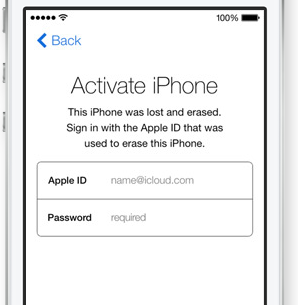2.8 Million Reasons Why Smartphones Need To Come With Kill Switches

Once the remote kill switch is activated, the user will need to enter the owner’s Apple ID and password, even if the SIM card is removed or replaced.
According to the 2013 Consumer Reports State of the Net Survey, an estimated 2.8 million Americans permanently lost a smartphone or had it stolen in the last year.
Nearly 60% (1.6 million) of these devices were stolen. The rest vanished into the ether, but victims of crime and of their own absentmindedness both reported that people tried to use their phones to make calls, or to access information like Facebook accounts and e-mail.
“This finding shows that consumers who lose their smart phones need a reliable way to disable those phones just as much as victims of phone theft do,” said Jeff Fox, Technology Editor, Consumer Reports.
There have long been third-party solutions for locating lost devices and Apple has had the Find My iPhone feature, but this new update will lock down the phone — even if its SIM card is removed — until the username and password are entered correctly. No other manufacturer offers this on phones in the U.S.
The major wireless carriers have agreed to share information on stolen phones so that, for example, a phone reported stolen from an AT&T customer could not be then be used on the T-Mobile network. However, critics point out that this does nothing to cripple that “blacklisted” device from being used on a WiFi network, making it worth money to someone. And if a thief can make even a few bucks off something he got for free, well that’s a profit.
This announcement comes as San Francisco District Attorney George Gascon and New York State Attorney General Eric Schneiderman are meeting with execs from Apple, Samsung, Google, and Microsoft on the topics of smartphones and theft.
Law enforcement in San Francisco has been particularly keen on kill switches for phones, saying that 50% of robberies in the city are related to theft of mobile devices.
Want more consumer news? Visit our parent organization, Consumer Reports, for the latest on scams, recalls, and other consumer issues.

